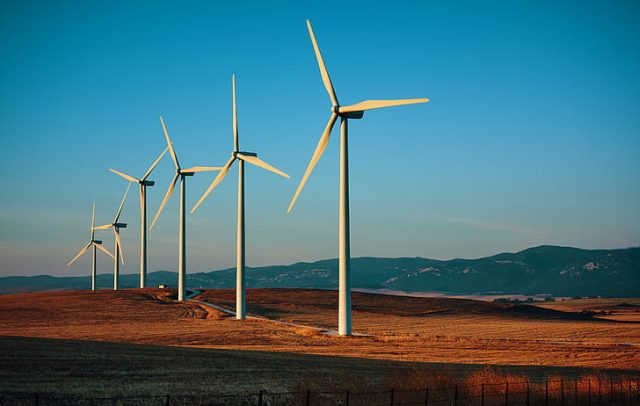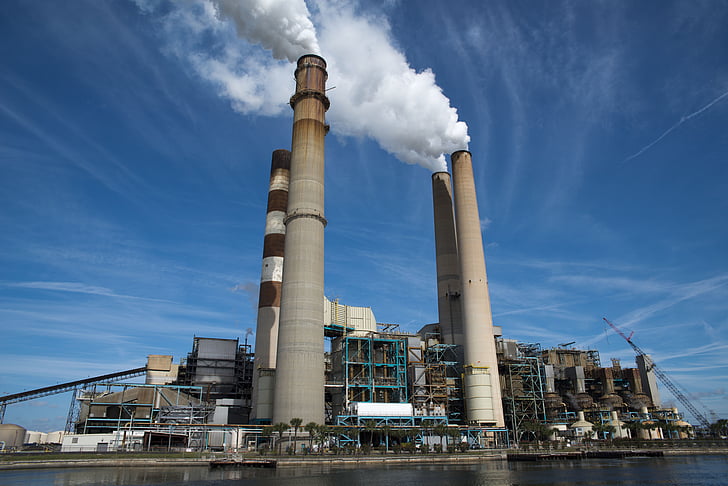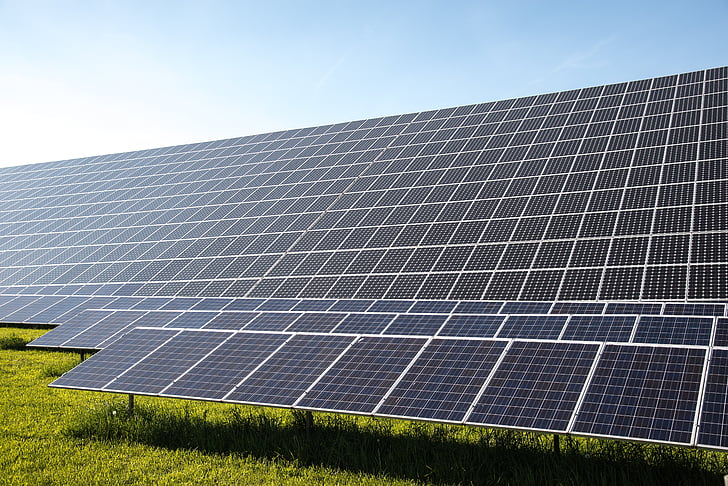
It is well known that 75% of greenhouse gas emissions in the European Union come from energy use and production. Following the conclusion of the European Green Pact, also known as the Green Deal, which aims to make Europe climate neutral by 2050, there has been a shift towards more sustainable, economical, secure and clean energy sources.
Although the Green Deal was to be implemented in almost 30 years, i.e. by 2050, by which time it should have achieved its full aim, due to the geopolitical situation in 2022 (the war in Ukraine and the economic sanctions imposed by the EU Member States on the aggressor, Russia), emergency solutions had to be found much earlier than planned. Although the replacement of current exhaustible energy sources with inexhaustible sources was achieved fairly quickly, more than half of the EU’s total energy comes from gas, oil and petroleum products, and it is well known that the main supplier of these products is Russia.
Over the last 3 years the price of natural gas has fluctuated significantly with exponential increases. While in the summer of 2020 the price per MWh (megawatt hour) was EUR 3, in August 2022 it increased more than 115 times and was traded in the Netherlands at EUR 346/MWh. As a result of these increases, i.e. the increase in the carbon tax and the current geopolitical situation, the escalation of the electricity price could not be avoided. Thus, a significant increase in the price of electricity could also be observed in Latvia. If in July 2020, the electricity price in Latvia averaged EUR 31/MWh; it reached in just two years, on the 17th of August 2022, the historical price of EUR 4,000/MWh. We can say that this represents a 129-fold increase compared to the price in 2020.
Latvia has also resorted to energy efficiency to offset increased demand
In addition to using sustainable energy sources, Latvia has also turned to energy efficiency to compensate for growing demand. At the same time, several scenarios have been created for the energy transition to take place by 2050. None of these scenarios envisages a complete switch away from fossil fuels and refer to a combination in varying proportions of nuclear power, natural gas and hydrogen technology as an energy source. Instead, all scenarios envisage the growth and development of nuclear energy.
It is well known that between 2015 and 2020 the European Union’s renewable energy capacity averaged 193.2 GW (gigawatts). In 2021, with all the setbacks of construction delays, supply chain disruptions and raw material prices, an average renewable energy capacity of 295 GW was reached.
Photovoltaic solar energy has also become quite popular in recent years, as photovoltaic modules have become much more affordable in recent years. In 2021, the price of a kilowatt-hour was USD 0.048 for large-scale PV plants, 88% less than in 2010. At the same time, the cost of the raw materials needed to produce PV panels rose significantly in 2021, after having tended to fall until then.
At present, according to specialists, the cheapest source of renewable energy remains wind power from onshore wind farms. In 2021 the levelised cost of onshore wind power was $0.033 per kWh, down 68% compared to 2010. During the same period, the levelised cost of offshore electricity recorded a 60% decrease and stood at $0.075 per kWh in 2021.

The levelized cost of electricity supplied by hydropower reached $0.048 per kWh in 2021. Although it is a technology that has long been used in different parts of the world, the possibility of developing new hydropower plants in Europe that also have a large capacity to produce electricity is limited; not only that, but the LCOE would be so high that it would not make these hydropower plants profitable. In addition, environmental NGOs are fighting against the construction of new hydropower plants in every possible way, arguing that these new sources of energy, considered green energy, irreversibly damage biodiversity.
Biogas and biofuel are also other renewable energy sources which currently account for 16% of the total European market.
Hydrogen as an energy source has a high potential and is estimated to reach a capacity of 50GW by 2030, 25% higher than the EU target.
Nuclear power is gaining momentum, with new reactors being built in Finland, Slovakia and France. While there are a total of 173 nuclear reactors in Europe, 109 are in the EU.
Latvia – almost half of the energy produced is from renewable sources
In terms of energy production in Latvia, renewable energy is in first place with a significant 42%. In second place is energy produced from petroleum products. In this case the share of the Latvian energy market is 32%. In last place, with 21%, is energy produced from natural gas.
As far as consumers are concerned, it can be seen that energy consumption in Latvia is almost equally divided between domestic consumers, the transport system and industry. However, the largest consumers are represented by domestic consumers in the proportion of 28.9%. Energy consumption with transport is 28.2%, and the last place is taken by industry with 23.6%.
A single hydropower plant covers almost half of the country’s consumption needs
In 2021 the main electricity producers in Latvia were represented by the Daugava hydropower plant with a total production covering almost half of the country’s total needs (46.7%). More than a third of the total electricity produced in Latvia is produced by various CHP (Combined Heat and Power) plants (34. 3%); the rest of the electricity is produced by 6.5% biomass, 4.7% biogas, 4% smaller CHP plants, 2.5% wind power, 1.2% small hydropower, and the smallest by only 0.04% solar power.
It is well known that in the past, the countries of the Baltic region have been largely dependent on Russia and Belarus for energy. Currently, in order to get rid of the dependence on Russia and Belarus, Latvia is working on a project to desynchronise energy from these countries’ grids and synchronise it with continental European grids. The Latvian government wants this transition to be completed by the end of 2025. Natural gas consumption in the Baltic region shows a slightly decreasing trend. This decrease is affected by the price of electricity in NordPool and the general trend of CO2 emission reduction. Russia’s total gas imports to Europe amount to almost 150 billion cubic metres (BCM). It is therefore unlikely that the current global gas supply will replace all of Russia’s gas imports. Current US LNG (Liquified Natural Gas) capacity is adequate but not sufficient to meet all of Europe’s demand.
Europe could switch away from Russian gas imports altogether if lower natural gas consumption takes effect, based on EU plans to diversify energy imports. By mid-decade, as liquefaction capacity increases in the US and Qatar, the volume of both countries’ exports to Europe will replace their dependence on Russian gas. A few things need to be said here about Europe’s current dependence on Russian gas. The US has enough gas to meet its national needs but cannot meet Europe’s gas needs. Therefore, Europe must also rely on liquefied gas from Qatar.
If we were to discuss a long-term scenario for Latvia’s energy portfolio, which does not include nuclear power as a source of electricity, hydropower is expected to remain the main source of electricity. Wind power from onshore wind farms is in second place, determined by their profitability compared to offshore wind farms. Thermal power will be kept as a back-up source when other energy sources fail to meet demand. Gas burned by thermal power plants could decrease in favour of biogas and hydrogen energy development.

If new nuclear reactors are built, it is estimated that two relatively small reactors of 300MW each, could produce more than 4TWh of electricity annually. In this scenario it is expected that hydrogen will be partly produced with nuclear electricity and instead hydrogen can be used mainly in the operation of thermal power plants. In case of a surplus, it can be exported to other neighbouring countries. However, this scenario does not take into account the competitiveness of electricity and electricity production in other countries. Compared to the first scenario, in the latter scenario, along with the use of hydrogen as an energy source, more frequent use of combined heat and power plants is also envisaged. The third place will be taken by hydropower and wind energy will be insignificant. One thing that should not be overlooked when evaluating possible solutions in the Latvian energy sector is the need to follow trends in the Baltic region. Latvia’s energy sector cannot be seen in isolation from that of its neighbouring countries, which are also participants in the same European energy market. It is important to be aware of the increasing risks of electricity traders when offering fixed-price services for electricity, as the commissions from contracts concluded with customers may not be sufficient to cover the real costs of energy production. It is also important to recognise the effect of the energy crisis on other areas as well. When evaluating possible project solutions, the risk of overinvestment in infrastructure should also be assessed against the intensity (efficiency) of its use. Long-term debt risks should also be assessed with caution when entering into agreements in times of turbulence.



 Subscribe
Subscribe